How Thick Should the Back, Sides and Top of a Concert Ukulele Be?
Best ukuleles for beginners 2021: Starting out with a uke? These 8 tropical beauties are just right for you
Included in this guide:
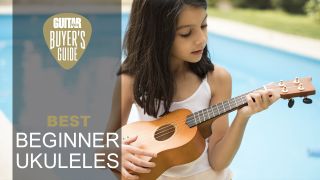
So, you see your future as a ukulele-toting musical maestro? Well, good on you, you couldn't have chosen a more entertaining instrument to learn to play. The best beginner ukuleles offer four short strings of pure, unadulterated fun. An instrument for bringing out the eternal optimist in even the most cynical of us, one quick strum will transport you to a land of joy and happiness. A sunny, tropical haven where life's a beach but nobody's ever going to kick the sand in your face.
On a less whimsical note, ukuleles are both practical and easy to master too. Their small size makes them easy to tuck away in a tiny apartment, and they're brilliant for taking on camping trips or to the beach. Just shove them in your backpack, or in the back of your car and away you go.
Learning to play is like studying the guitar, but much more straightforward because you have a third fewer strings to worry about. Chord shapes are easier, and scales are a doddle. Frets are closer together too, so there's no pain inducing stretches to make. If you already play the guitar then you're well on your way to uke utopia.
Yes, they have a very distinctive sound, but they're more versatile than you may think. After decades of being overlooked as a serious instrument, the uke suddenly sprang back into fashion in the late 1990s. You couldn't switch on the telly without hearing chirpy, overblown ukulele music accompanying adverts for everything from cars to toilet paper.
Happily, things settled down and, rather than dying of overexposure, the ukulele reinvented itself by adding subtle texture and interest to songs by the likes of Taylor Swift and Billie Eilish (Eilish even has her own Fender signature model).
Today, you can find it appearing in almost every genre from jazz to dance to chart belters. It's never been more popular, and there's never been a better time to pick one up and start learning.
Best beginner ukuleles: Our top picks
For us, the best beginner ukulele is the Kala KA C RW Mahogany Concert . The team at Kala live and breathe ukes, it's their primary business not just a side-line.
This wonderful concert ukulele scores on price, on build, on sound, on appearance – there's very little to dislike here. The mahogany construction is going to give you shedloads of tone, warmed up a little by the concert sizing, which is no bad thing. That concert size is also going to be accessible to more players, especially those with larger hands.
It's not the cheapest ukulele here, but it is stonking value for around the $/£100 mark, and it could easily serve you for years to come.
We also heartily recommend the Cordoba 20TM-CE Tenor Ukulele . Like Kala, Cordoba is passionate about building nylon-stringed instruments that look and sound sublime.
It's not a cheap buy, but it does include an undersaddle Piezo pickup, quality tonewoods and a reliable build. In a few years' time, when you're ready to hit the stage, the 20TM-CE will have your back.
Best beginner ukuleles: Product guide
Image 1 of 2
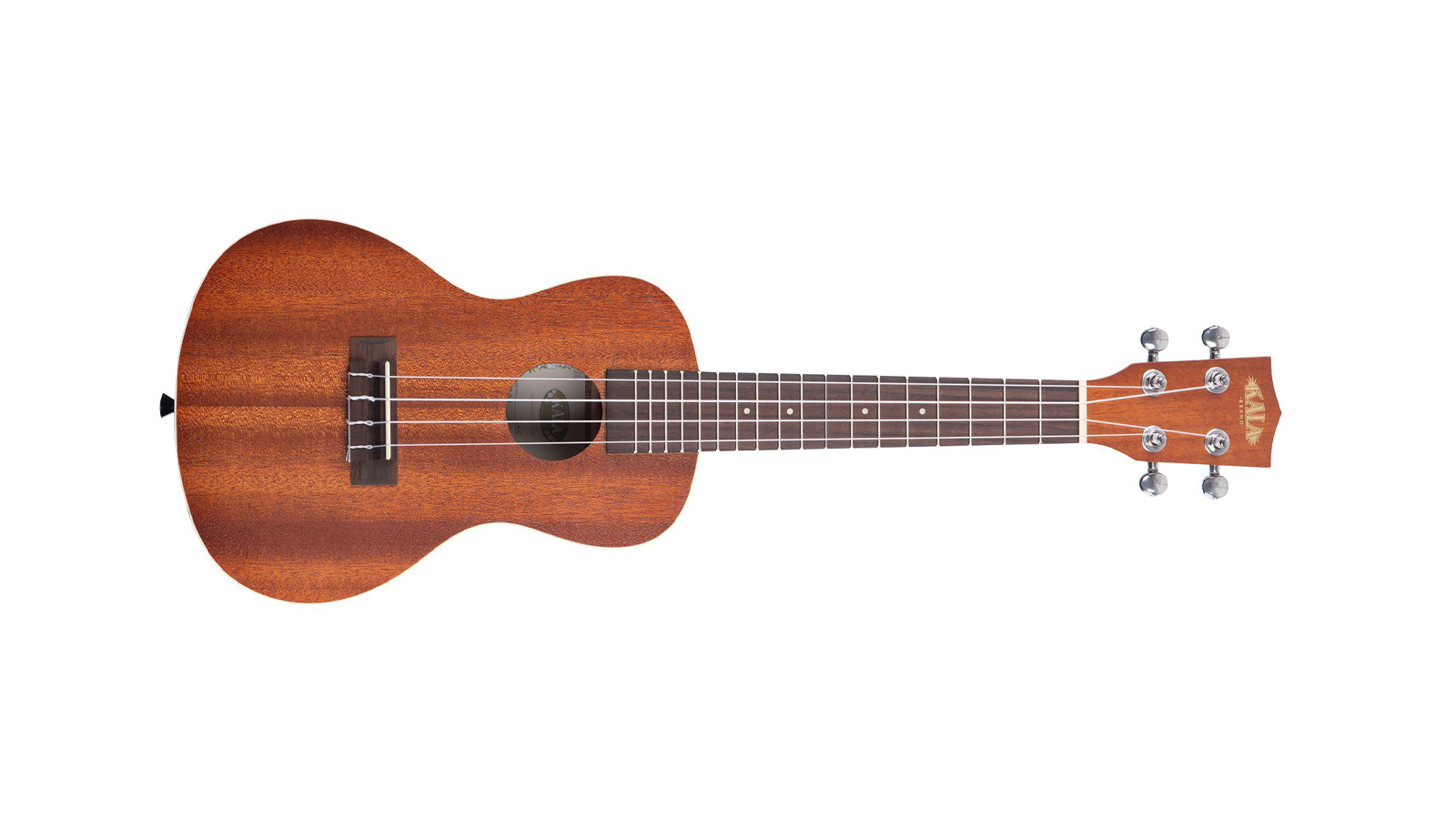
Image 2 of 2
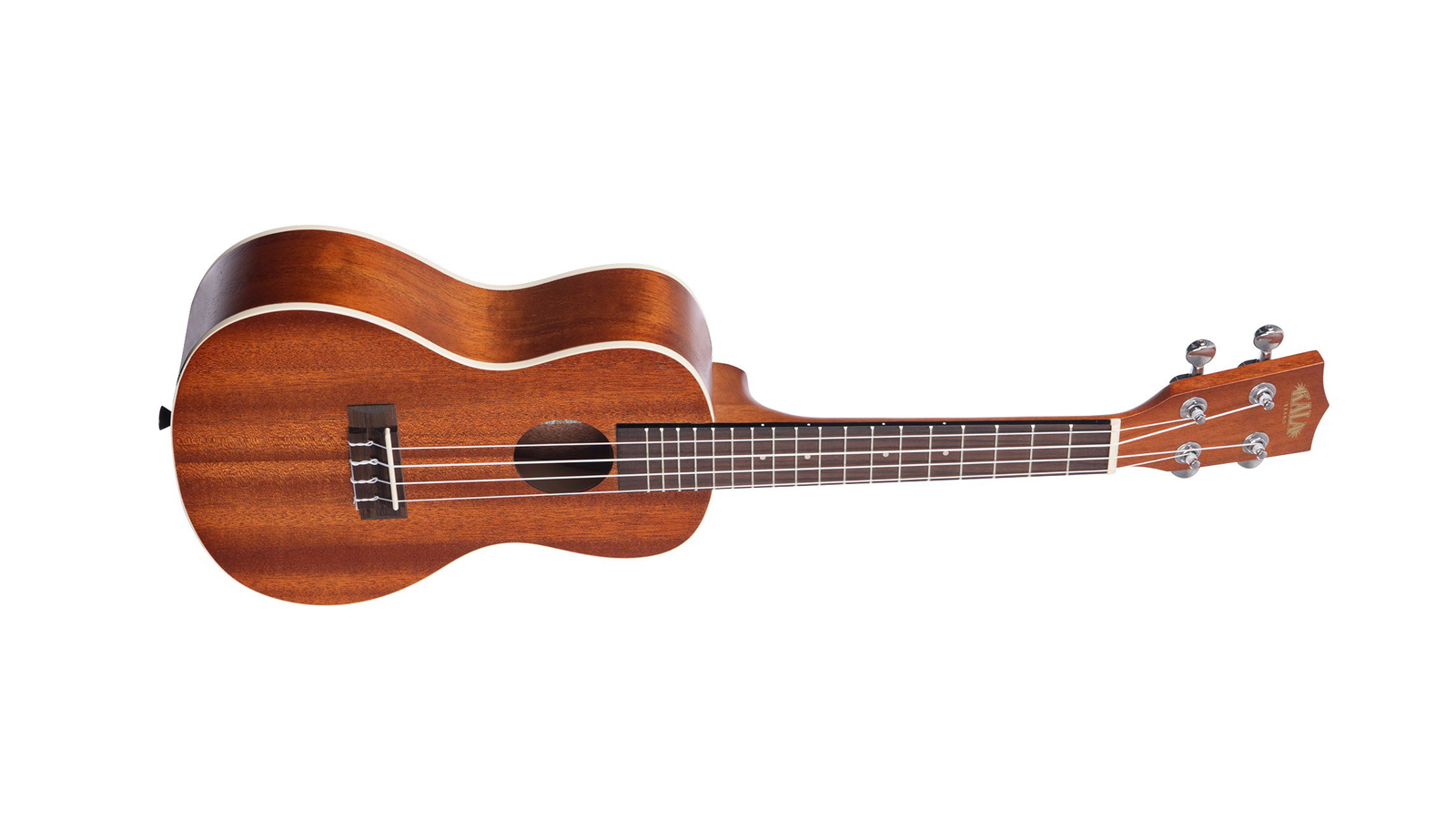
1. Kala KA C RW Mahogany Concert
A smart hog beginner ukulele that would suit intermediate players too alike
Specifications
Price: $109/£109
Size: Concert
Top: Mahogany
Back and sides: Mahogany
Neck: Mahogany
Fingerboard: Rosewood
Scale length: 14.8" (37.5cm)
Frets: 18
Electronics: No
Reasons to buy
+Quality materials +Great hog tone and punch +Will outlast beginner phase
Reasons to avoid
-Not much
Kala is a big name in the ukulele game, with a vast range that covers every base from beginner to expert player. It's certainly a brand you can trust to deliver instruments built to a good standard, even at the lower price points.
Its KA C RW Mahogany Concert hits the sweet spot, both in terms of pricing and sound. You get a mahogany body and neck, rosewood fingerboard and Graph Tech nut, all for around the $/£100 mark. As you'd expect from the construction, it sounds very clear and direct with good projection.
It looks rather smart too, with its satin finish and classic cream binding. This is a ukulele that successfully demonstrates why it's worth spending that little bit more than entry-level prices.
Image 1 of 2
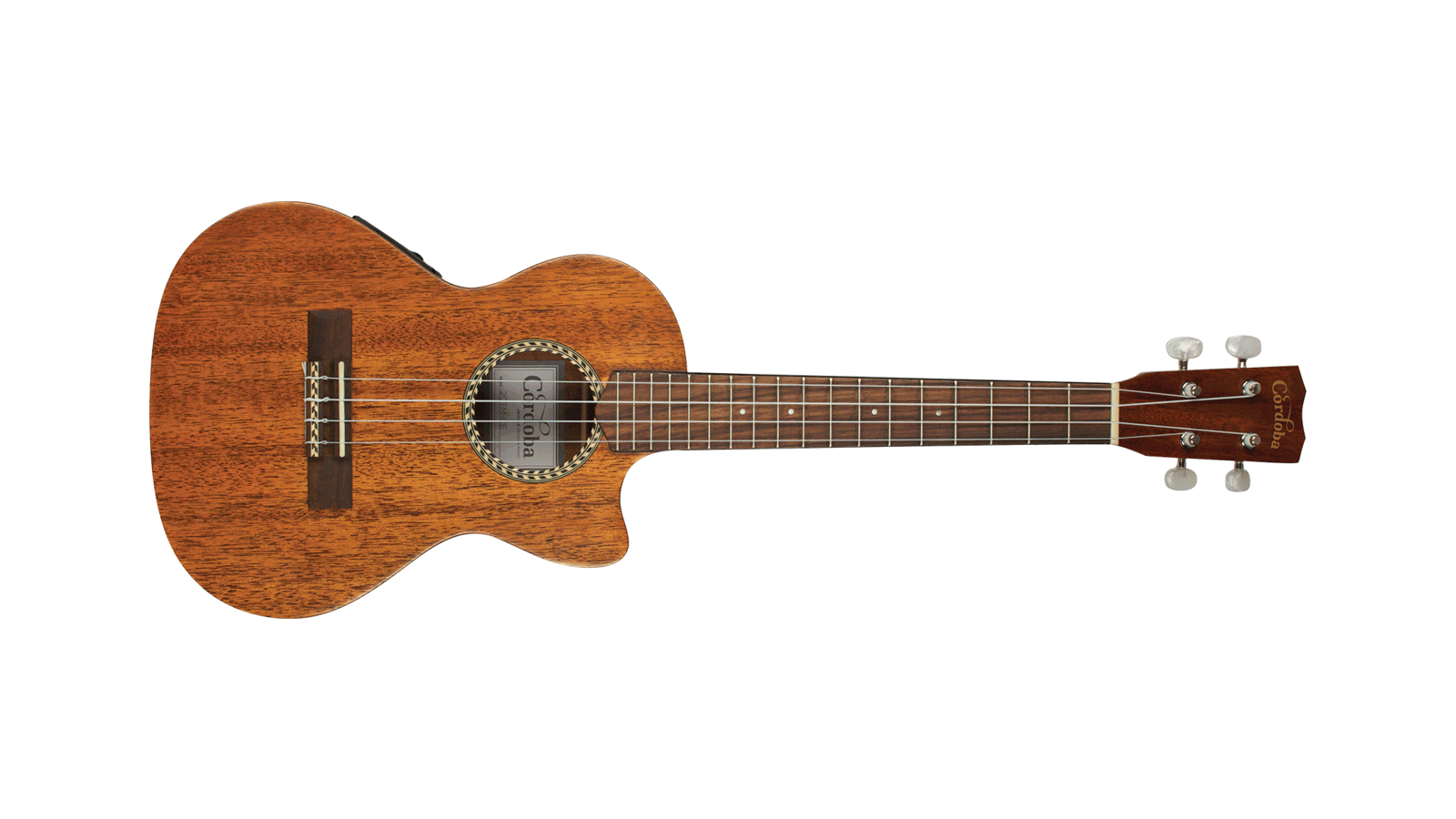
Image 2 of 2

2. Cordoba 20TM-CE Tenor Ukulele
Stage ready when you are
Specifications
Price: $199/£170
Size: Tenor
Top: Solid mahogany
Back and sides: Solid mahogany
Neck: Mahogany
Fingerboard: Pau Ferro
Scale length: 17 (43cm)
Frets: 18
Electronics: Undersaddle Piezo
Reasons to buy
+Superb build +Amazing tone +Onboard pup and electronics
Reasons to avoid
-Not as much history as some other brands here
Cordoba's mission has always been to make nylon string acoustic guitars cool again. It may appear to be an old company, steeped in heritage, but it was only founded in 1997. Since then, it's been successfully luring steel string players – both acoustic and electric – to its superbly built nylon strung guitars.
The point being? Well, this is a company that knows about craftsmanship, it knows how to build lightly constructed instruments that resonate beautifully. And, it has its finger on the pulse.
Ukulele construction is very, very similar to classical guitar construction. So, who are you going to trust to build yours? A company that usually screws together weighty electrics and now markets cheap ukes as a side-line, or the luthiers at Cordoba?
The 20TM-CE is more expensive than some other ukuleles in this buyer's guide but then it is completely handmade with a solid mahogany top, back and sides. It has a built-in undersaddle Piezo pickup and Belcat electronics, ready for when you're ready for your first stage performance.
It's also a thing of beauty.
Image 1 of 2
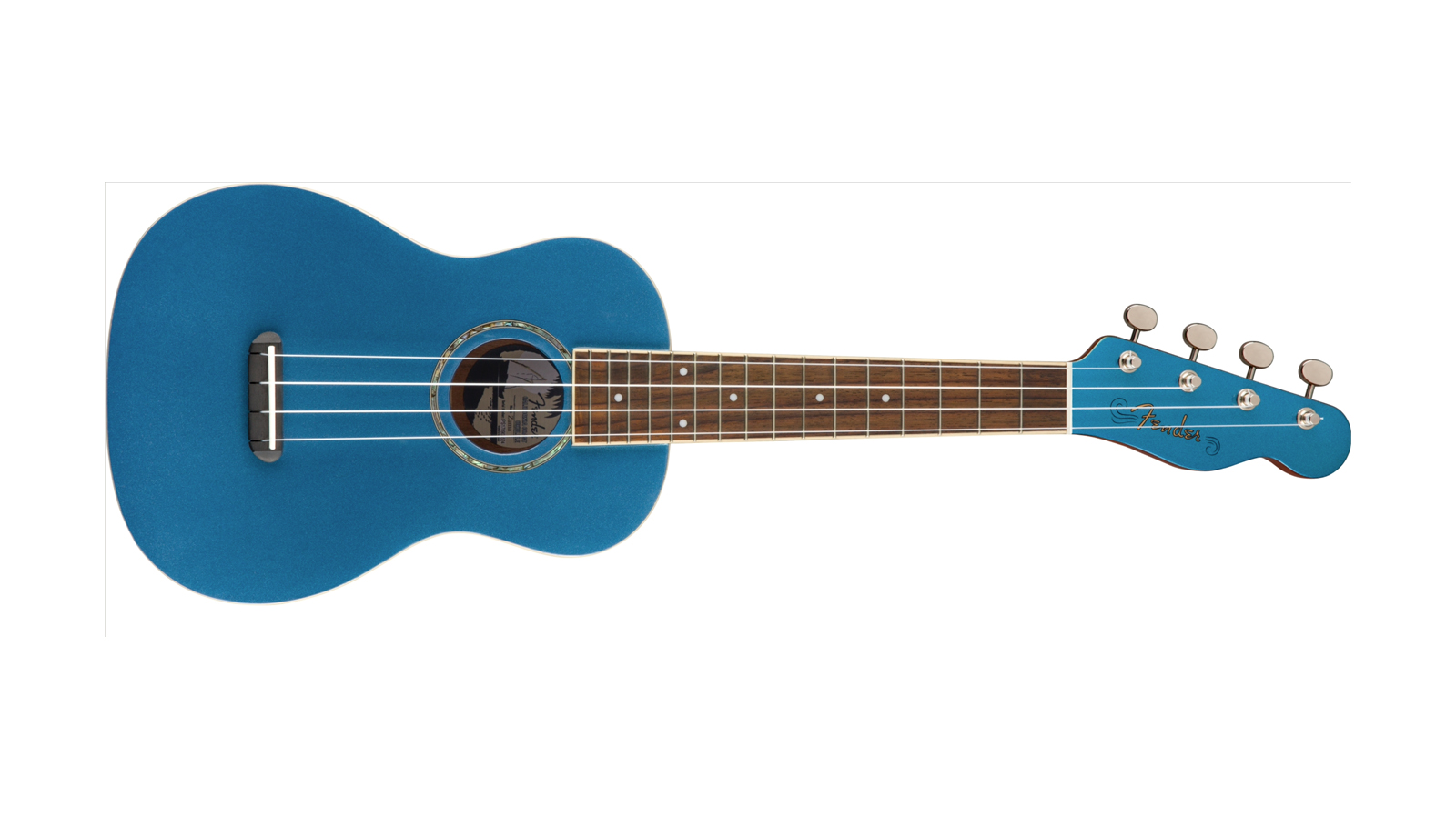
Image 2 of 2

3. Fender Zuma Concert
Californian vibe meets Hawaiian tradition
Specifications
Price: $169/£109
Size: Concert
Top: Sapele
Back and sides: Sapele
Neck: Sapele
Fingerboard: Walnut
Scale length: 15" (38cm)
Frets: 16
Electronics: No
Reasons to buy
+Fun but reserved vibe +Value for money +Build quality
Reasons to avoid
-Headstock not for everyone
Fender makes all manner of ukuleles and is possibly best known for its models that mimic the looks of its classic Strat, Jazzmaster and Tele guitars. Call us boring if you like, but they seem a little ostentatious to us (but great fun!). We prefer the traditional look of the Zuma, with its classy sapele body and abalone rosette.
It can do humor too, just take a look at the Tele style headstock complete with inline tuners, or the tongue-in-cheek versions in vintage Fender colors Lake Placid Blue and Burgundy Mist.
Looks aside, the Zuma is a strongly built, well specified ukulele with a rich tone that balances both warmth and clarity in a very pleasing way. It's excellent sound and concert size lends this uke to fingerstyle, as well as hearty strumming.
We can see this little uke being casually strummed on its namesake Zuma beach in Malibu or played with more proficiency in the studio. A versatile beginner ukulele for sure.
Image 1 of 3
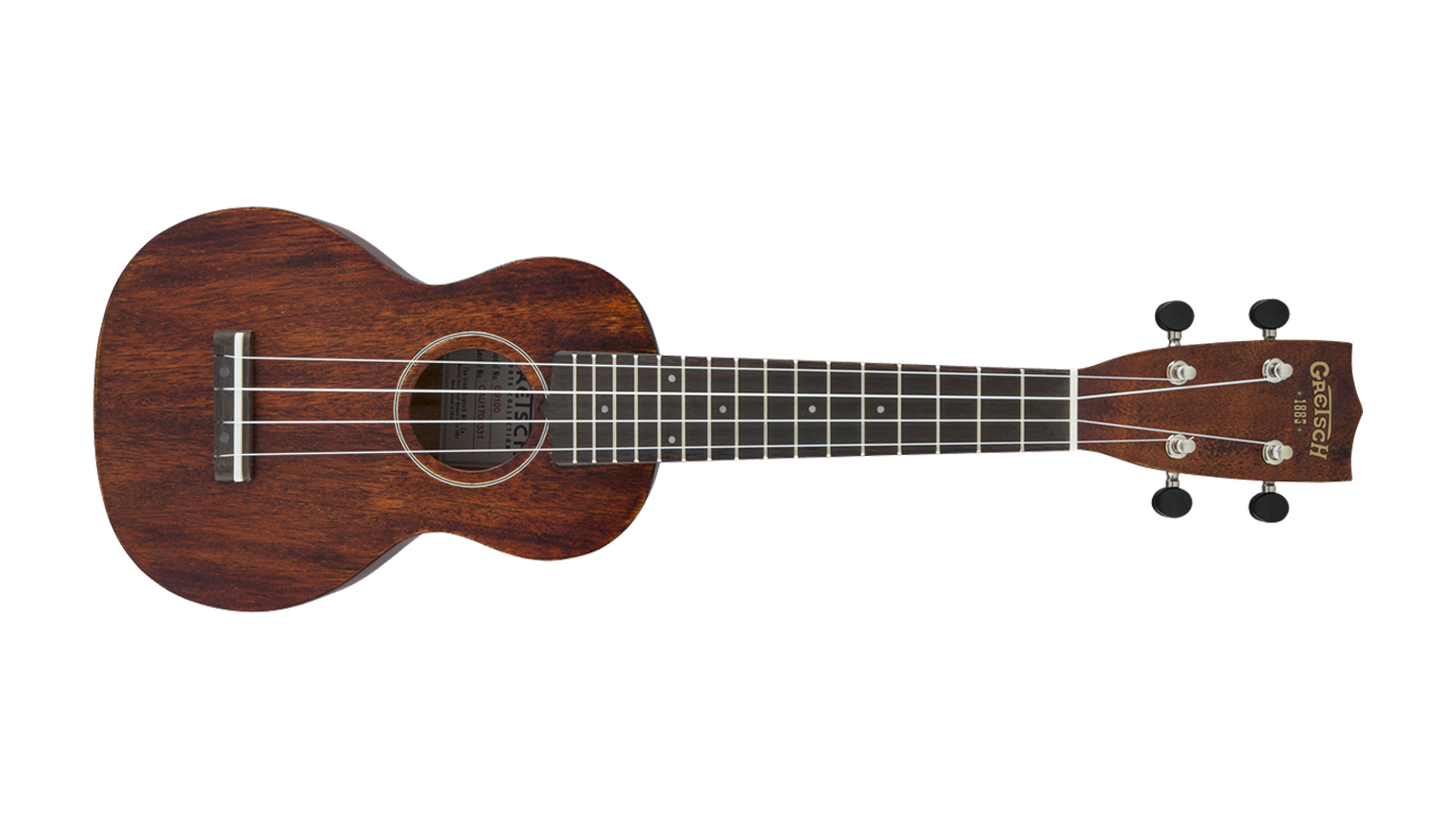
Image 2 of 3
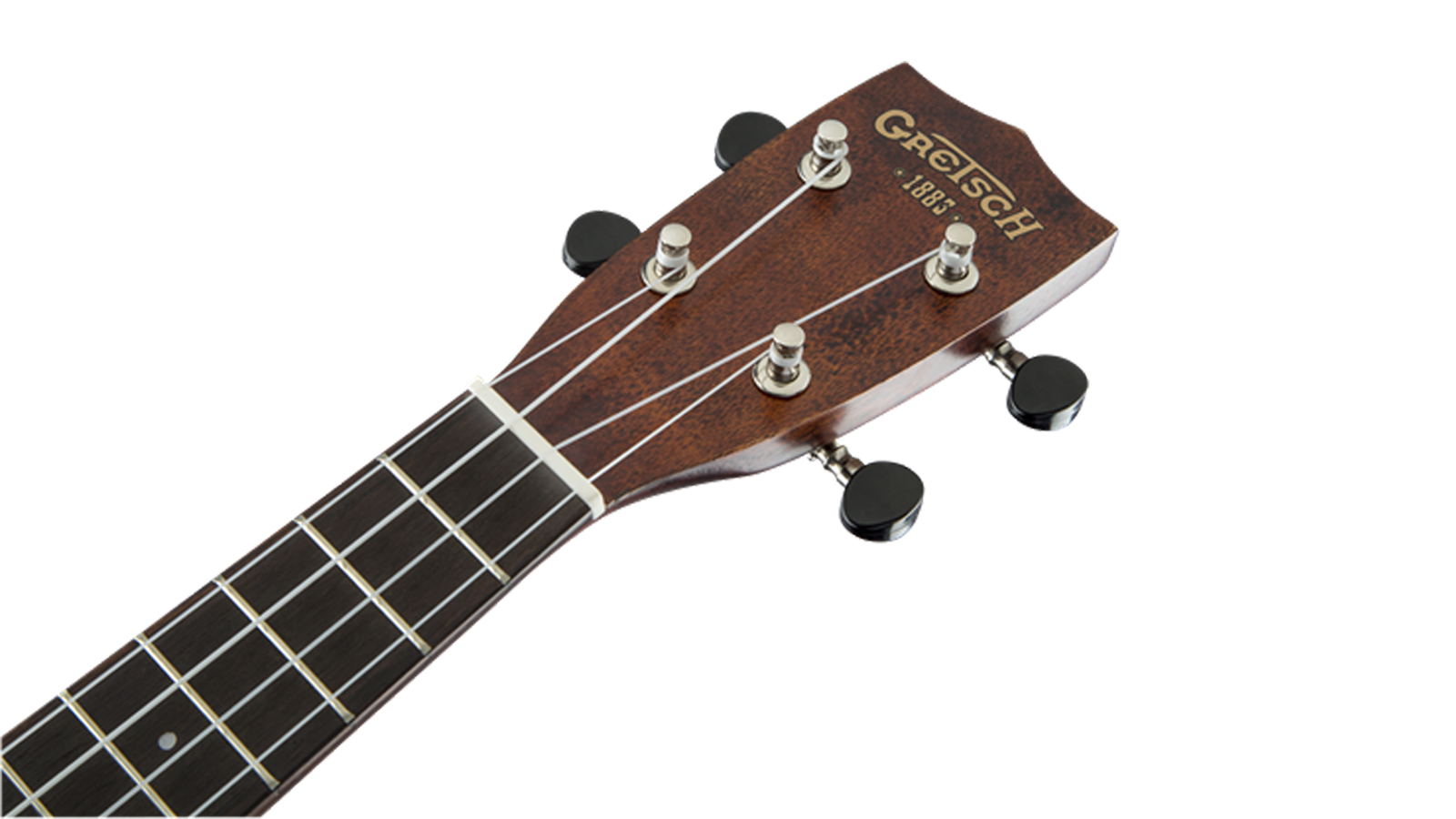
Image 3 of 3
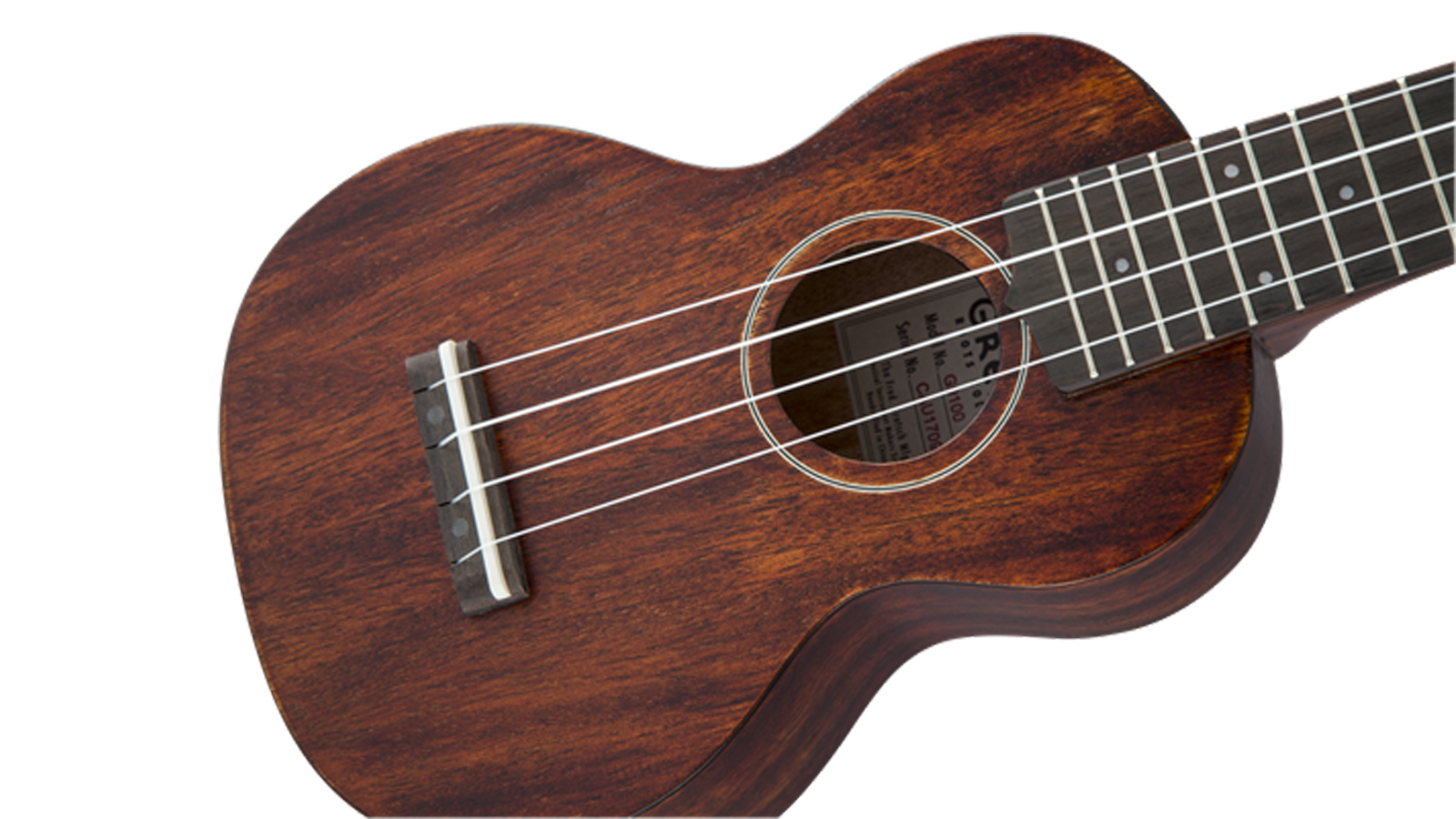
4. Gretsch G9100 Std Soprano Ukulele
Period looks from the brand that knows how to do vintage
Specifications
Price: $129/£85
Size: Soprano
Top: Mahogany
Back and sides: Mahogany
Neck: Mahogany
Fingerboard: Ovangkol
Scale length: 13.5" (34cm)
Frets: 16
Electronics: No
Reasons to buy
+Vintage looks +Surprisingly powerful +Soprano size very portable
Reasons to avoid
-Larger hands may struggle
This is a fantastic little uke for throwing in the back of your car and just speeding off, seeing where life will take you. What is it about Gretsch? It seems to ooze more vintage cool, more authentic heritage, than almost any other brand out there. And this little uke has been soaked in a good dollop of the stuff.
Its authentic good looks are matched by an equally authentic tone. Mahogany is a great choice here. Soprano ukuleles can sound weak, subdued and top-end heavy, but the mahogany just punches through with its powerful, focused midrange and lack of harsh, ringing overtones.
Not one for chunky fingers, but nevertheless a powerful little beast that will look and sound the part in any folk, country or bluegrass setting. Hang that, we'd take it anywhere…
Image 1 of 3
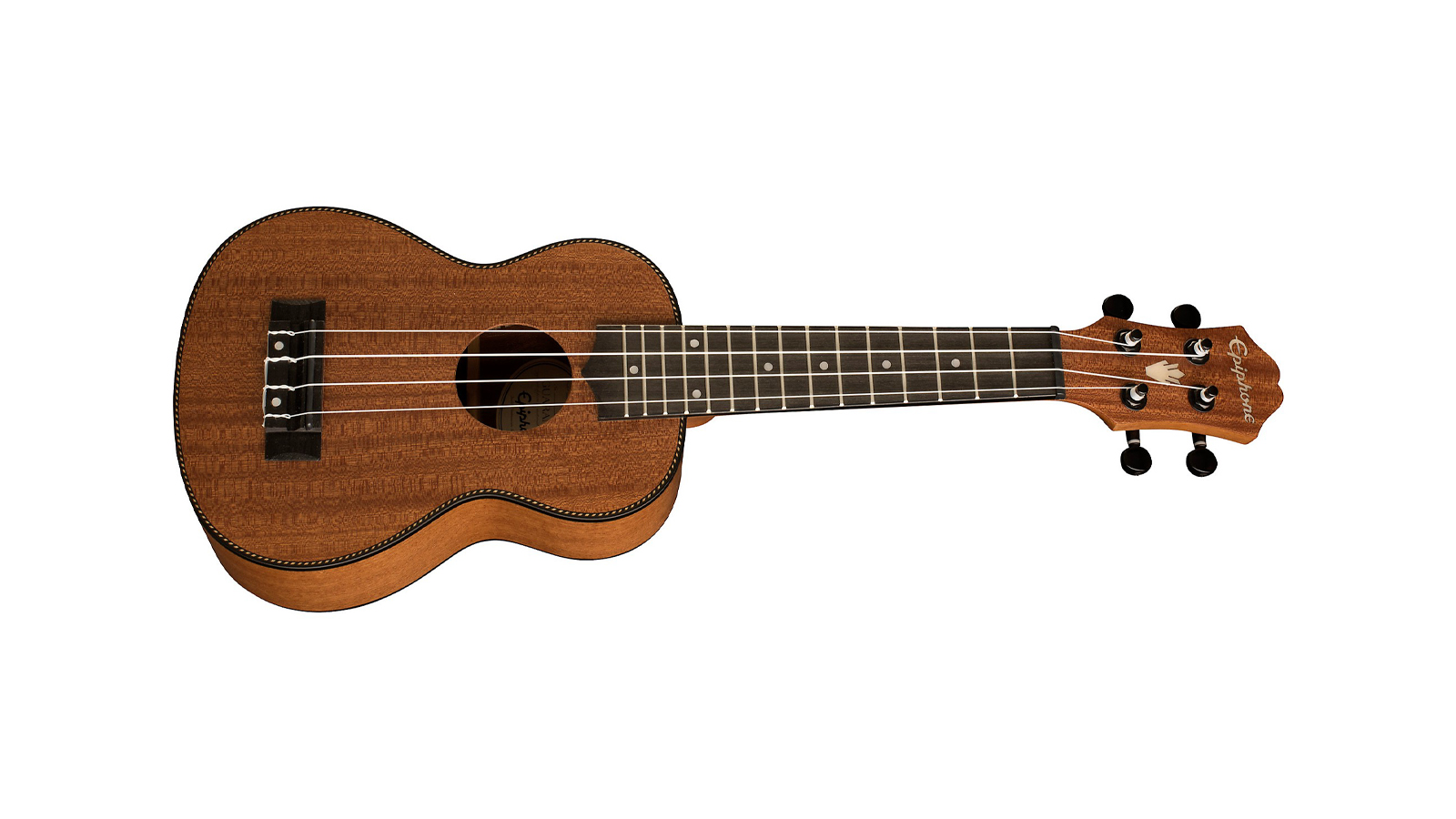
Image 2 of 3
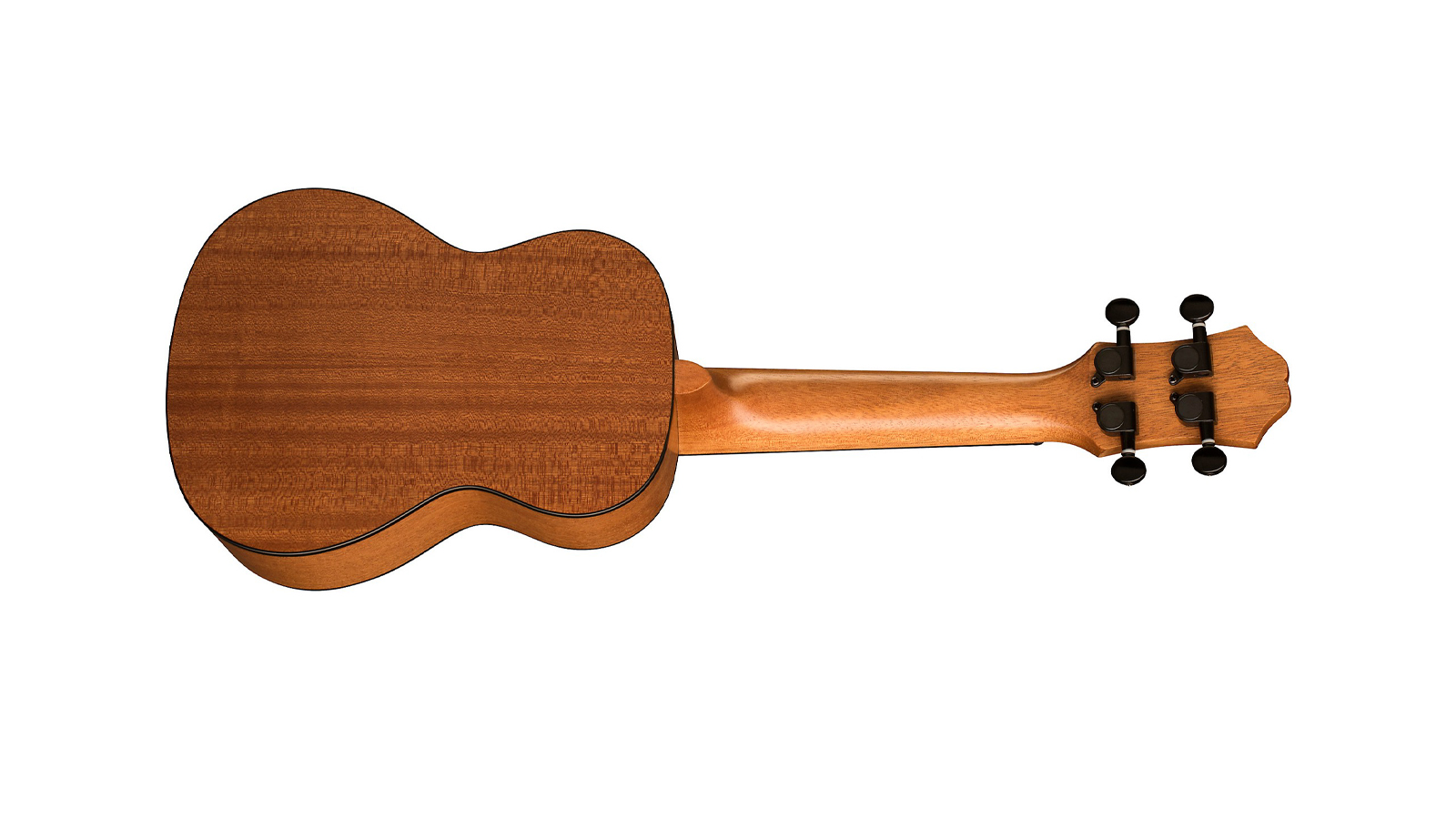
Image 3 of 3
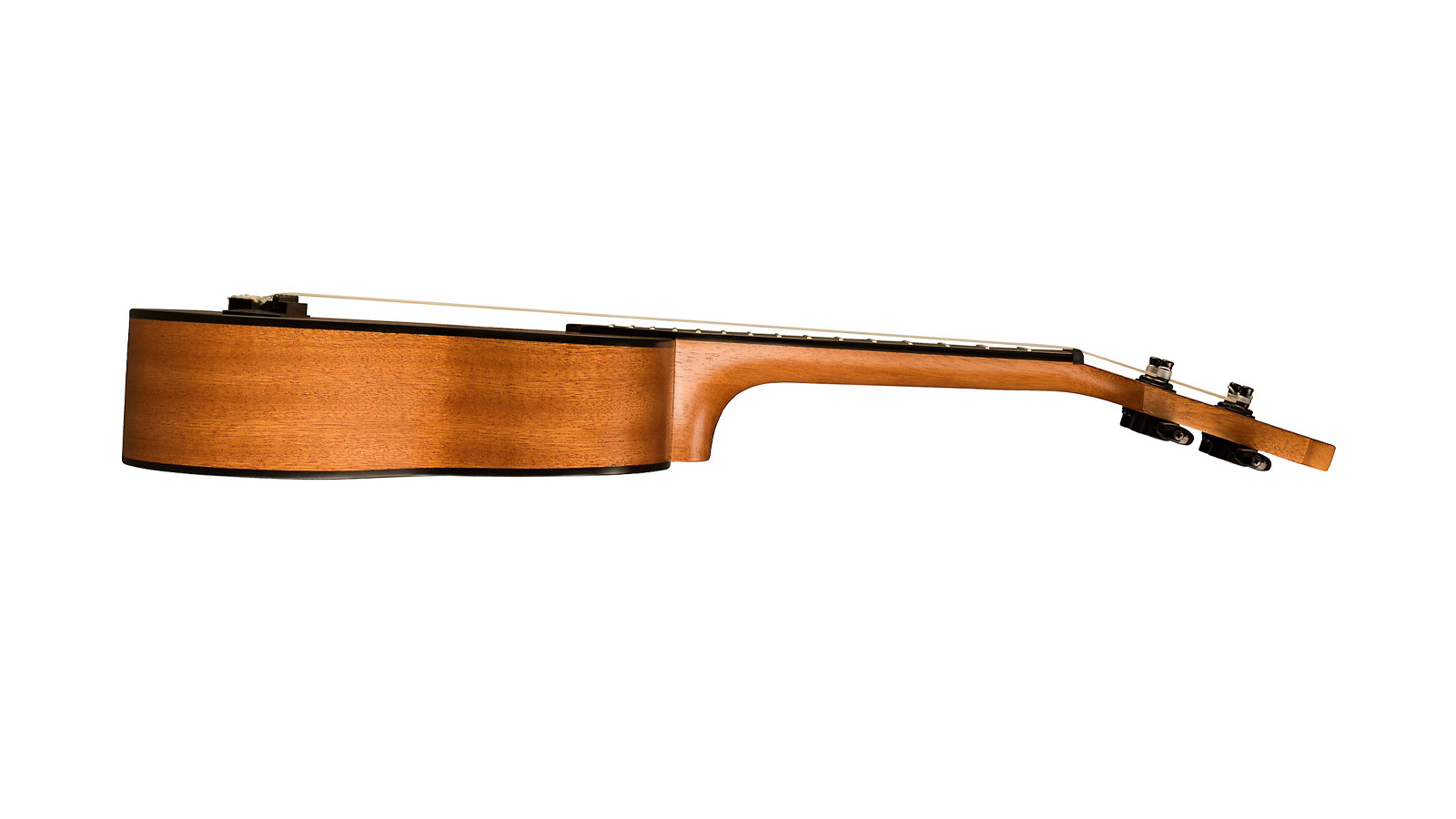
5. Epiphone EpiLani Soprano Ukulele
A budget beginner uke that punches well above its weight
Specifications
Price: $79/£66
Size: Soprano
Top: Mahogany
Back and sides: Mahogany
Neck: Mahogany
Fingerboard: Undisclosed hardwood
Scale: 15" (38cm)
Frets: 15
Electronics: No
Reasons to buy
+Great value beginner uke +Excellent build for small outlay +Punchy hog tone
Reasons to avoid
-You may outgrow it
Back in the day, Epiphone used to make world-class guitars that were right up there with the very best. More recently, (well, over the past 60 years, since it was bought by Gibson) it's earned a reputation for building world-class inexpensive guitars that are, in the main, every bit as good as its pricey rivals pretend to be.
Epiphone is the guitar brand of the people. Inexpensive instruments that are built like a Lexus, look like a Jaguar and play as fast and smooth as a Tesla.
The EpiLani shares all of these values. This is an unashamedly budget instrument from Epiphone, designed from the ground up to be thrust into the hands of beginners. It even ships with a handy chord chart.
For the money, it's one of the best beginner ukuleles around. It's all-mahogany tone punches well above its weight, fretwork is tidy, intonation is good, and it's neatly put together.
There's an awful lot of rubbish out there at this price point, but if you're on a tight budget then this is a good choice.
Image 1 of 2
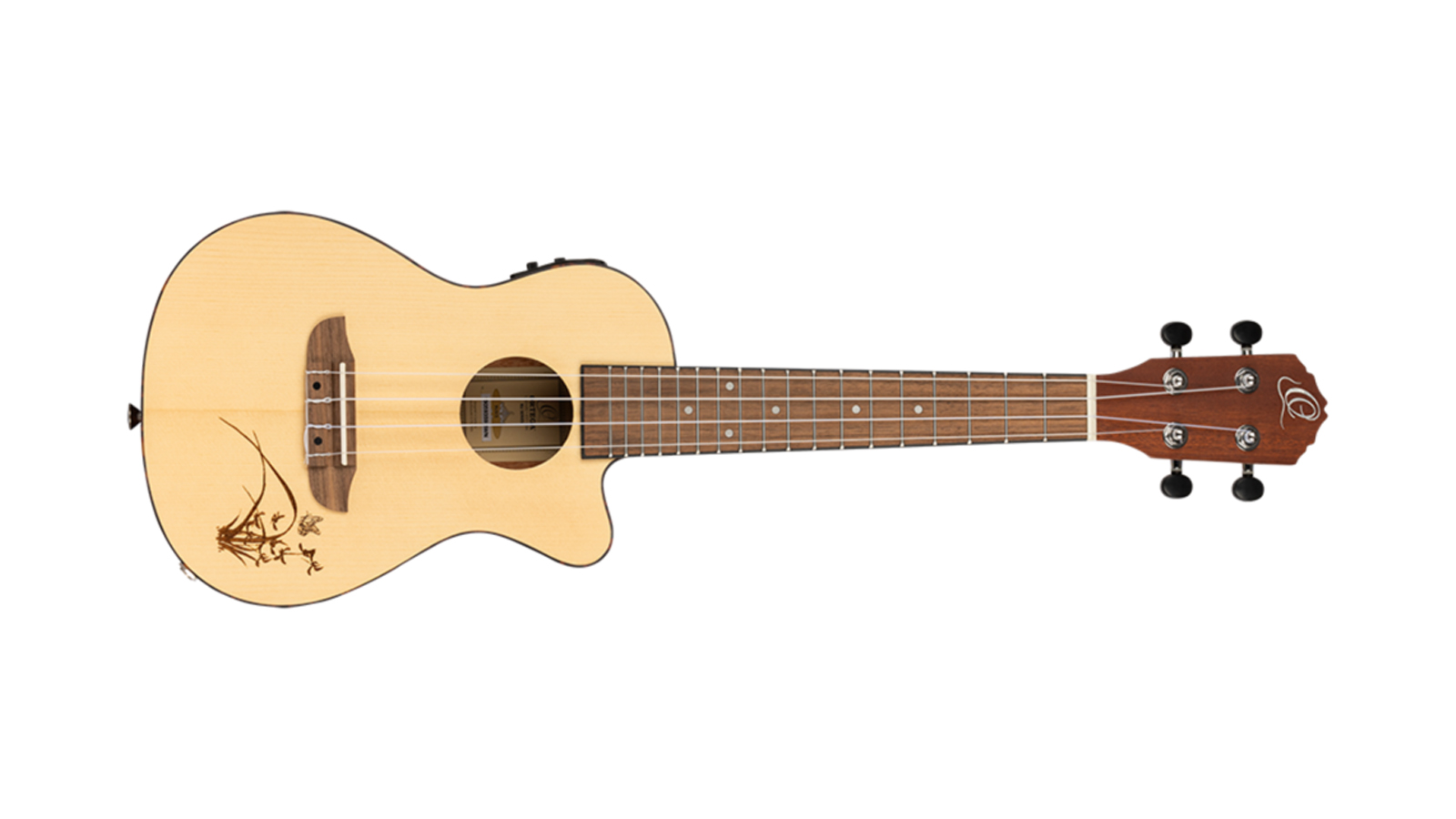
Image 2 of 2
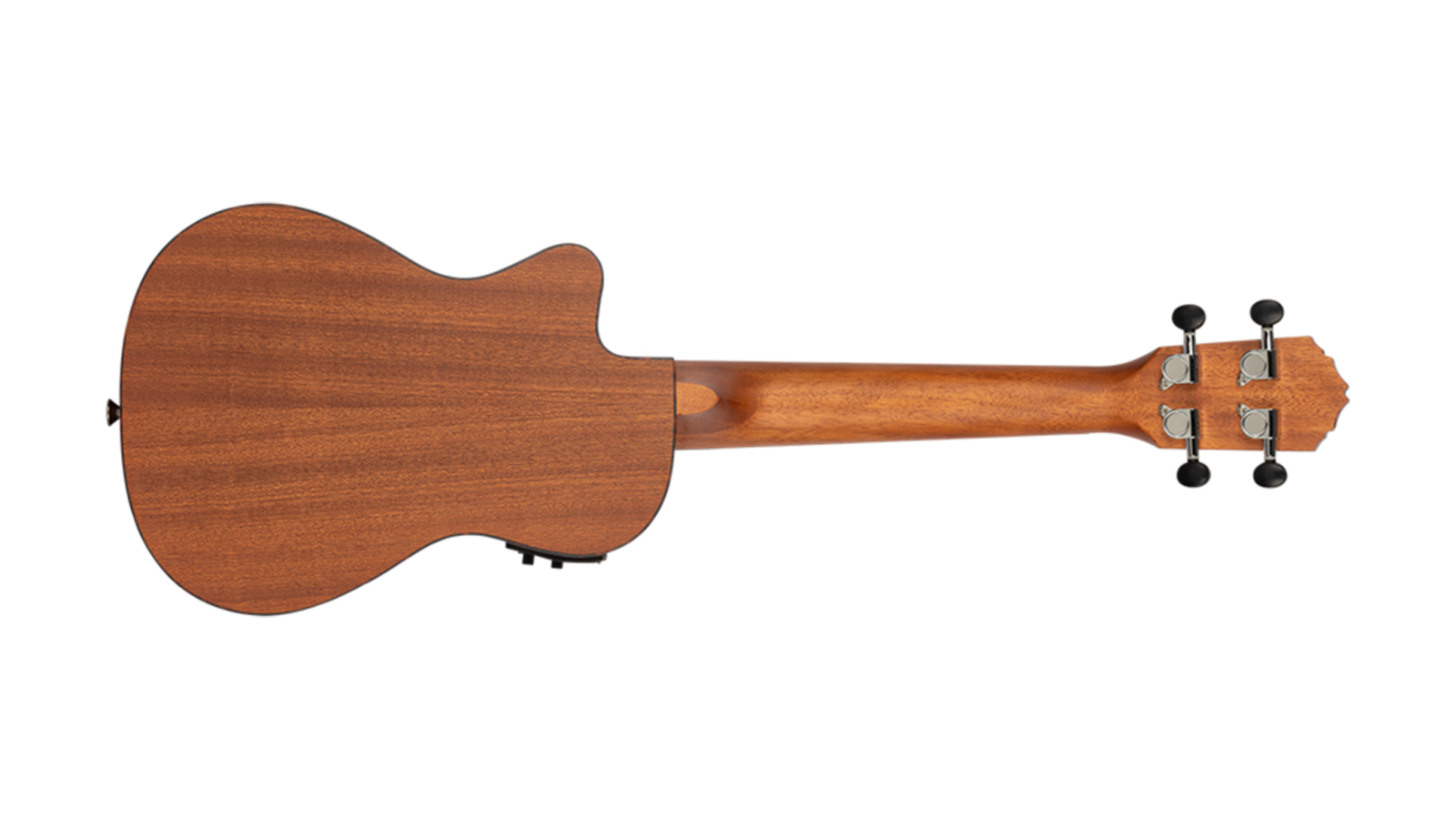
6. Ortega RU5CE
Seriously good fun
Specifications
Price: $160/£82
Size: Concert
Top: Spruce
Back and sides: Sapele
Neck: Mahogany
Fingerboard: Walnut
Scale length: 15" (38cm)
Frets: 18
Electronics: Undersaddle Piezo
Reasons to buy
+Balanced tone +Great build and materials +Value
Reasons to avoid
-Marmite' artwork
Ortega takes its fun seriously. A lot of thought has gone into the cute RU5CE, and it shows. Many of the beginner ukuleles in this buyer's guide are all mahogany, which is a good choice, but it's refreshing to see the classic combination of a bright spruce top matched with the warm sapele back and sides.
Little touches, like the sealed machine heads, built-in tuner and the lightly applied finish that lets the natural wood grain through, demonstrate that somebody at Ortega cares.
The fretwork on our RU5CE is excellent, with even, carefully filed frets and no discernible buzzing. The walnut fretboard is smooth and fast.
The icing on the cake, at this price point, is the inclusion of an undersaddle Piezo pickup and accompanying MagusUke electronics.
Unfortunately, the laser etched Butterfly and Grass artwork on the bridge will prove a bit 'Marmite' to many. You'll either love it or hate it.
Image 1 of 2
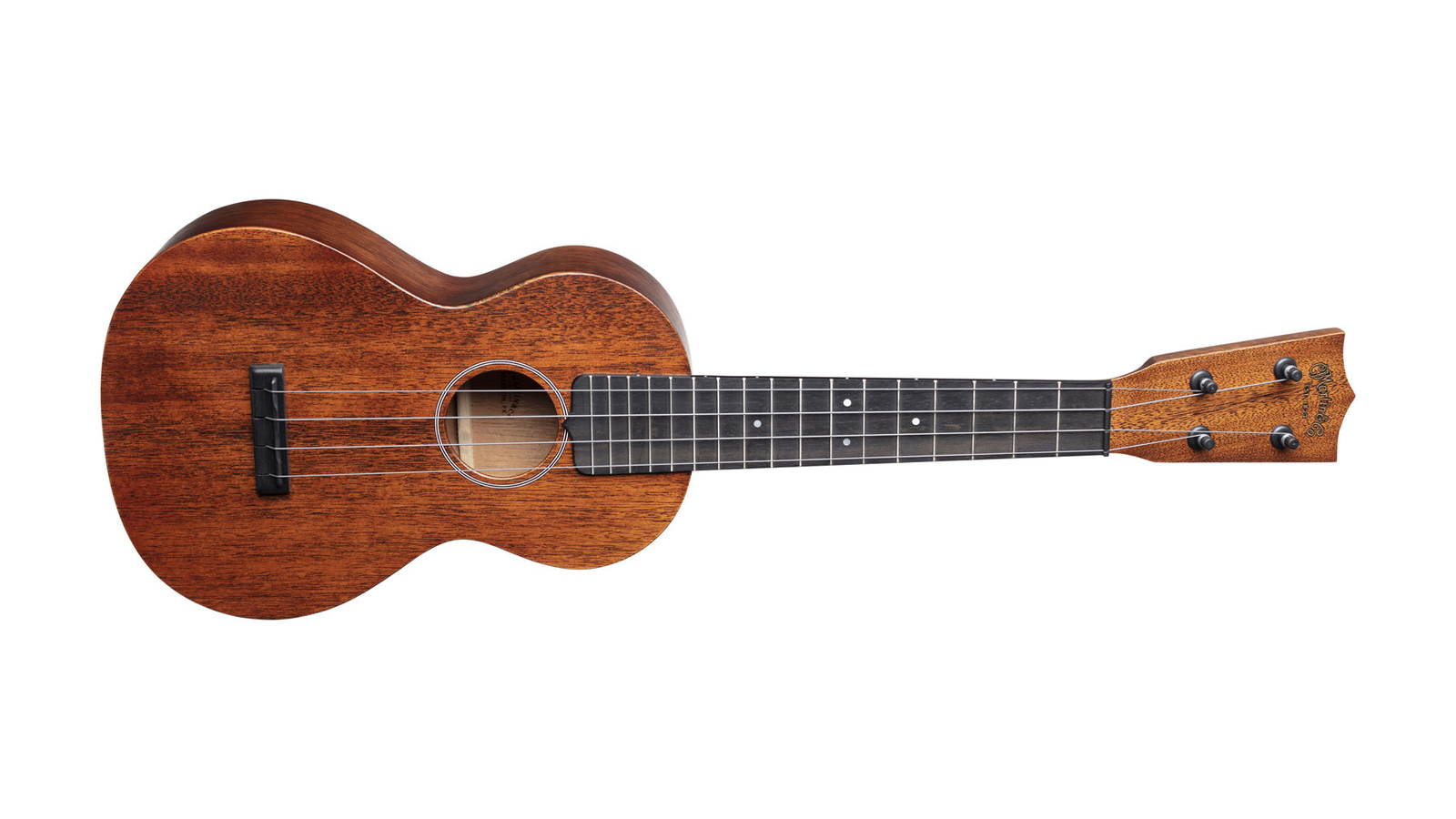
Image 2 of 2
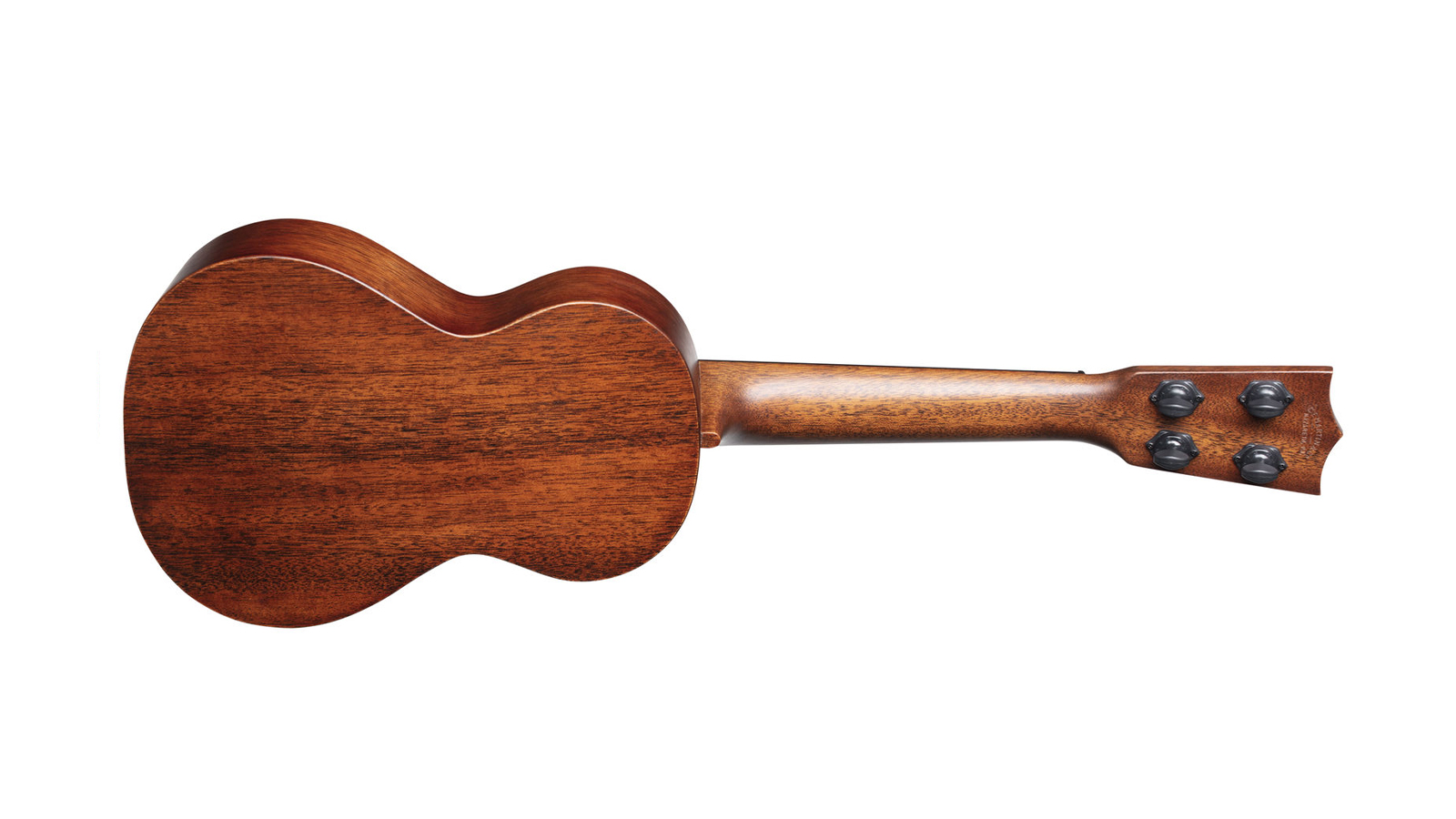
7. Martin Concert Ukulele
Constructed using FSC Certified Mahogany
Specifications
Price: $2,399/£2,399
Size: Concert
Top: Mahogany
Back and sides: Mahogany
Neck: Mahogany
Fingerboard: Ebony
Scale length: 15" (38cm)
Frets: 17
Electronics: No
Reasons to buy
+Sustainable wood +Incredible tone +Subtle good looks
Reasons to avoid
-Price limits it to a lucky few
OK, we admit it. Perhaps we're taking the 'buy well, buy once' ideology to extremes here but bear with us.
Why should beginners be cursed with cheap, awful, unplayable 'starter' instruments? Who propagates cynical nonsense such as 'all the gear, no idea'? We should all be free to buy whatever we can afford, without the fear of jealousy-fuelled judgement.
Of course, affordability is an issue for almost all of us, which is why we've included eight very good instruments at a broad range of price points in this buyer's guide. But we shouldn't ignore the top end.
Not all beginners are cash-strapped youngsters. It's common for those facing retirement to take up an instrument because they finally have the time. Sometimes, they have the disposable income too. So, this choice is for them.
The Martin Concert Uke FSC is a premium instrument for those who value craftsmanship and the environment. Every piece of mahogany used in its construction is sustainably sourced, as it should be.
There's very little decoration on show, it's rather a plain looking instrument, but the investment has been made in quality tonewoods and build, not bling.
This is a beautiful, understated uke that sends out all the right messages. Maybe it really is the only ukulele you will ever need – what could be more sustainable than that?
Image 1 of 2
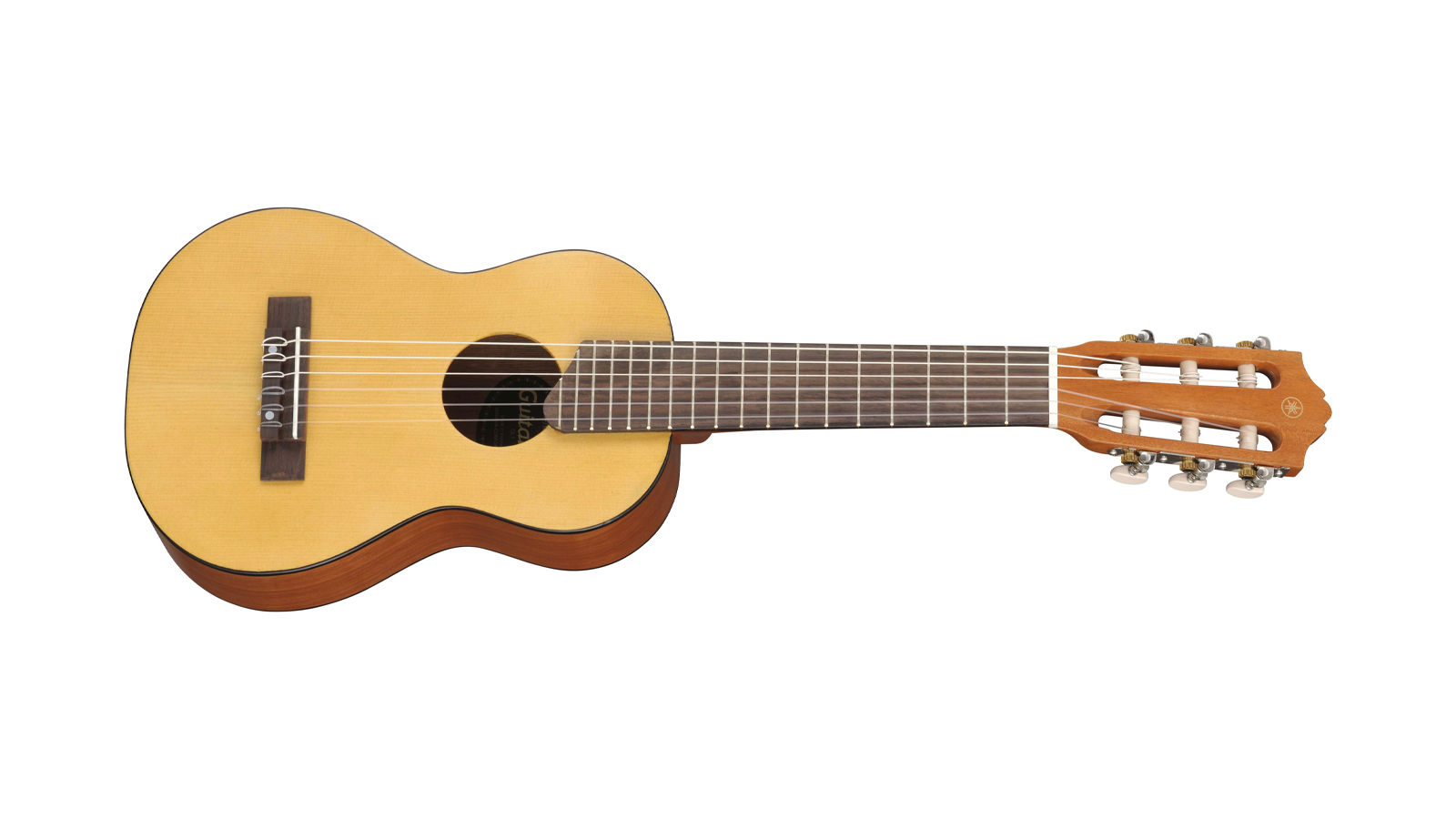
Image 2 of 2
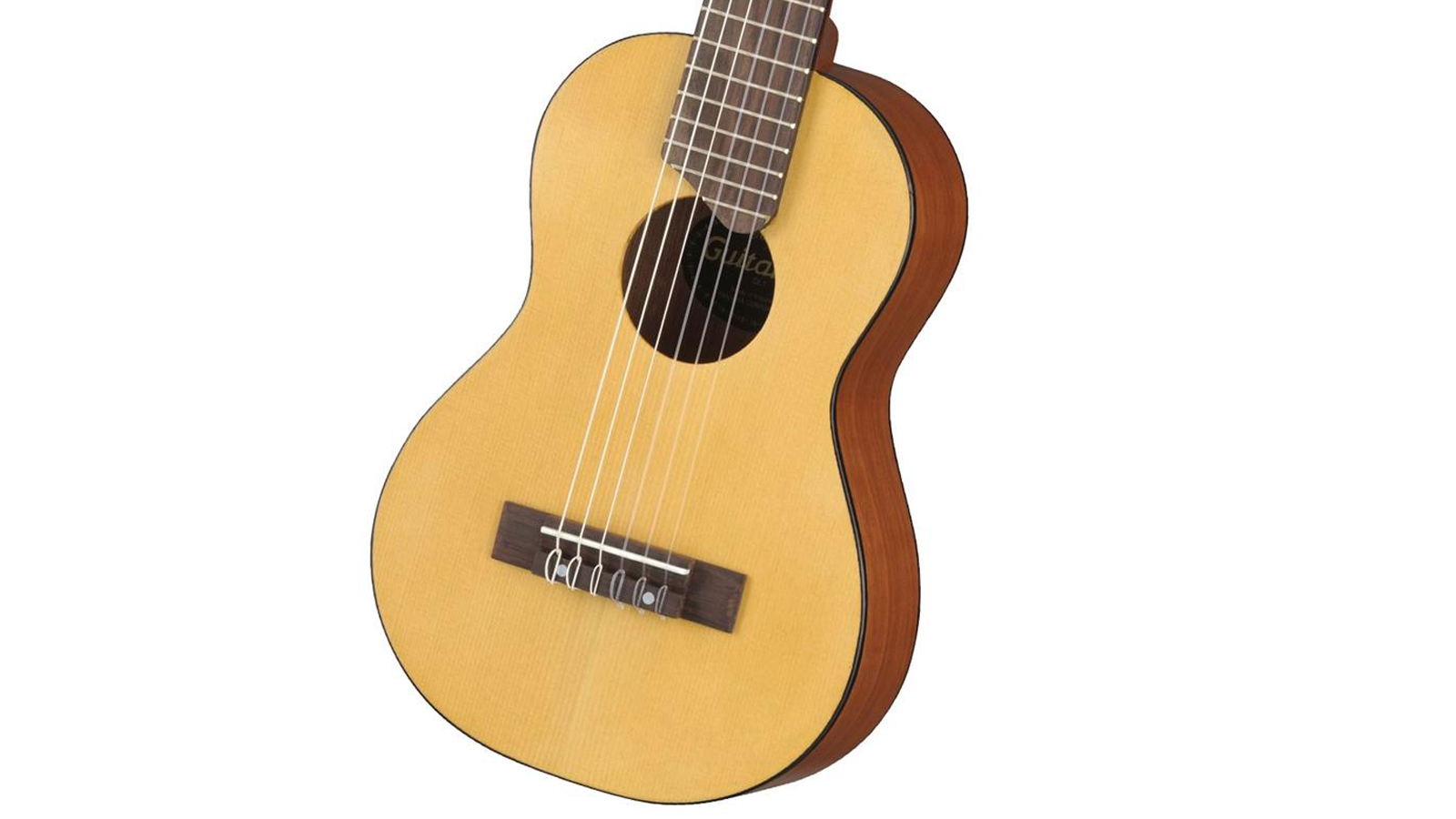
8. Yamaha Guitalele GL1
The guitar/uke mashup that works
Specifications
Price: $145/£108
Size: Tenor, but really a mini guitar
Top: Spruce
Back and sides: Meranti
Neck: Meranti
Fingerboard: Rosewood
Scale length: 17" (43cm)
Frets: 18
Electronics*: No
Reasons to buy
+Guitar-like experience +Awesome sound +Great playability
Reasons to avoid
-It's not really a uke
The Yamaha Guitalele is a uke for the guitar player who doesn't like ukes. Or, more accurately it's a mini-guitar, six strings 'n all, with a ukulele-sized footprint. If it sounds like we're being a bit negative about the Guitalele, we're not, it's actually very good.
There is however, no getting away from the fact that it's not really a ukulele. But that's OK. If you're a guitar player who craves a strong hint of that uke sound but doesn't want to have to learn a new instrument to get it, then the Guitalele is perfect for you. If you prefer the versatility that two extra strings bring, then the Guitalele scores again.
There's nothing to dislike about the Guitalele. It benefits from Yamaha's legendary build quality, its comparatively large size means that it sounds full, large and loud, and it's nicely specced with a spruce top, meranti (similar to mahogany) body and rosewood fingerboard. It can handle any repertoire a ukulele can, plus everything in your guitar songbook.
What's not to like? It's not really a ukulele…
Best beginner ukuleles: Buying advice
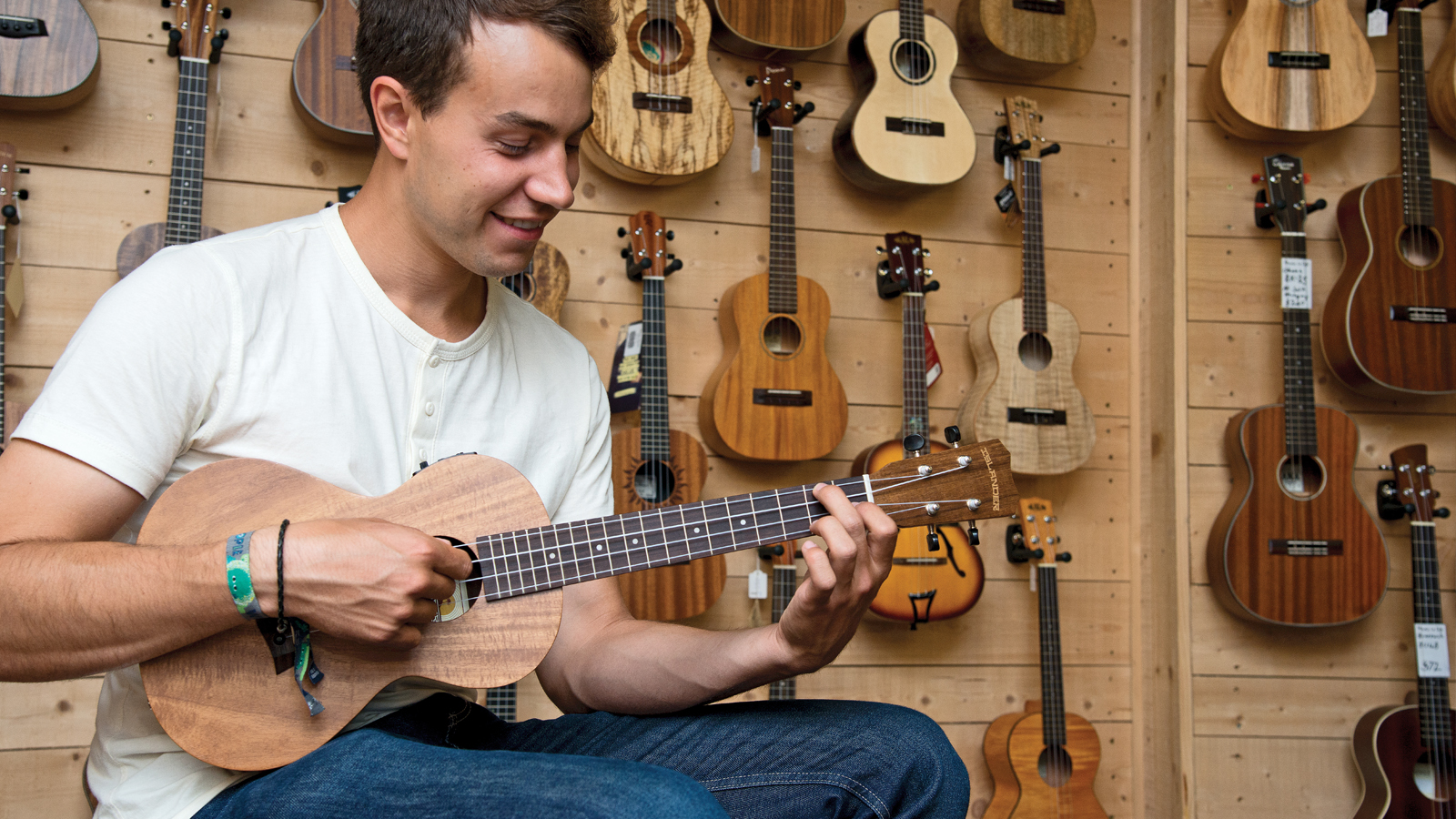
How do you tune a beginner ukulele?
Ukuleles are pretty easy to play, especially if you're already a guitarist, but there are some tuning quirks you'll need to get used to. The uke's four open strings are tuned to GCEA, which are the same notes you'll find on the guitar's four highest pitched strings (the ones nearest the floor) at the fifth fret.
Or, looking at it a slightly different way, play the uke's strings at the seventh fret and you'll hear DGBE, which are the same notes as the guitar's open strings. This may sound complicated but it's really not that hard to get your head around once you've been playing for a short while.
If you do play the guitar, you'll be transposing notes, scales, chords and songs to your uke in no time. If you don't play the guitar then hey, there's nothing to relearn. Either way, it's all pretty simple once you get used to it.
Another tuning quirk has a complicated sounding name – re-entrant tuning – but don't let that bother you. A stringed instrument like the guitar has open strings that get progressively higher in pitch as you pick them. The bass string, the one closest to your chin, is the thickest and sounds the lowest. The next string is slightly thinner and a bit (a fifth) higher in pitch. The next string is thinner again and higher still, and so on.
With the ukulele, what should be the lowest sounding string (G) is actually tuned up an octave. It's still the same note (G), so chord shapes aren't affected, and it's a big part of what gives the ukulele its distinctive sound. Banjo tuning works in a similar way.
If all of this sounds way too complicated (give it time, and it won't) and you'd rather your playing experience was closer to that of the guitar then you may be better off with a guitalele instead. It's a similar size to a ukulele but strung just like a guitar with six strings. The fretboard interval map is the same except, just like the uke, its open strings correlate to a guitar capo'd at the fifth fret. In many ways it's the best of both worlds but what it gains in versatility it lacks in authenticity.
What size ukulele is right for me?
Beginner ukuleles come in all shapes and sizes, with the most popular being soprano, concert and tenor. Baritone ukuleles are larger, with a deeper, fuller sound that's more like a guitar. In fact, because they lack the convenient size and distinctive tone of a ukulele, we'd recommend beginners avoid them, but concede that they make a fantastic second instrument and do a wonderful job of filling out the sound of a ukulele orchestra.
Soprano ukuleles are the smallest and most familiar instruments – they really are tiny! There's no standard sizing but they are typically about 21 inches (53cm) long with 12 frets and a 13.5 inch (34cm) scale length. They nail that plinky ukulele sound, can be inexpensive to buy and will suit most beginner players. However, their small size and scale length does mean that the frets are tightly spaced, which can be awkward for larger hands.
If you are blessed with long, chunky digits then you'll be better off with the slightly larger concert or tenor models. A concert ukulele is just slightly larger at about 23 inches (58cm), with 18 frets and a 15 inch (38cm) scale length. The tuning is the same, so it will sound similar to a soprano but the fretboard spacing is a touch more generous. It trades that distinctive plinky tone for better mid-range and bass response, and its larger body will be more resonant and louder.
A tenor ukulele is a step up again at about 26 inches (66cm) long with 18 or more frets and a 17 inch (43cm) scale length. Once again, the fretboard is less congested, it has better dynamic range and more projection, but it won't sound as authentic as a soprano. Ironically, we're used to recommending instruments with more sonic depth, range and projection but in this case only you can decide which sounds 'better'.
One thing's for sure, if the fretboard is too small to play comfortably then, after a week or two, your new uke will be discarded to gather dust. Buy the size you enjoy playing.

Beginner ukulele wood and string choices
Visit any online guitar forum and you'll find exhaustive (and often exhausting) discussions about the qualities of various tonewoods, and how they influence an instrument's sound. Is it the same in ukedom? Yes, absolutely, but at the 'value' end of the market brands will be choosing wood based on cost, not tone.
Another lively debate will concern solid wood vs laminates, with the latter being the underdog. Solid wood, for tops, backs and sides, is nice to have but laminates can still sound fantastic, and save you a wad of cash.
Spruce, a light-colored pine, is commonly specified for acoustic guitar and ukulele tops because of its bright, yet full sound. It's the inoffensive do-it-all timber that reacts just as well to fingerpicking as it does strumming. Stiff and light, it yellows to a gorgeous, pale butterscotch shade with age.
Maple can be used for tops, backs, sides, necks – pretty much the whole instrument. It's much harder than spruce and has a clean, sparkly, transparent tone that can be strident but never harsh. Dense and heavy it can be beautifully figured, but also yellows with age.
Cedar has similar qualities to spruce but it's much darker in color and warmer in tone. Just like spruce, it's only used for tops.
Ukes tend to be lightly built, with no truss rod, so the tension of steel strings would pull one apart in no time.
Mahogany is a favorite of ukulele luthiers. Dense and dark reddish in color 'hog' has an abundance of warmth and an emphasised midrange. It's 'woody' tone packs a powerful punch, and it will sustain seemingly forever. Mahogany is commonly used for tops, backs, sides and necks. Sapele, which is closely related to mahogany, looks and sounds similar.
Rosewood is perhaps the most commonly sought-after wood for the back and sides of a ukulele. A good piece of rosewood looks simply gorgeous. Rich, dark and embellished with swirling, rippling figuring, it takes gloss finishes particularly well. Fortunately, for us players, it sounds every bit as good as it looks right across the frequency range – a warm bottom end is balanced beautifully by transparent, zingy highs.
Koa is perhaps the ultimate wood for a ukulele, not least because it hails from Hawaii. It looks stunning, with a rich caramel color and complex figuring. It sounds pretty good too but can be a touch bright at first, so you may have to wait a few years for it to mellow. Koa is typically used on backs and sides.
Unfortunately, koa is desperately expensive, usually well beyond the budget of beginners and expert players alike. Still, it's good to dream.
Plastic is not a tonewood, so steer clear of plastic ukuleles.
Ukulele strings are almost always nylon. Ukes tend to be lightly built, with no truss rod, so the tension of steel strings would pull one apart in no time. Frankly, steel strings would be too bright for an instrument that's already a bit treble-heavy anyway.
There's nothing to stop you using a pick on nylon strings though. Try experimenting with felt or leather picks made specifically for ukes.
How much should I spend on a beginner ukulele?
A decent ukulele will set you back about $/£50 to $/£100 and upwards. Spend much less than that and you run the risk of buying a toy, not an instrument. Your money should buy you a beginner uke that sounds good, has decent intonation and is easy to play. The neck should be straight, and there should be no sharp fret ends waiting to bloody your fingers.
Invest a bit more – $/£150 plus – and say hello to a world of enhanced tone, better playability, onboard pickups and more bling, such as decorative inlays. Part with a real chunk of cash, upwards of $/£2,000, and you'll be the proud owner of an heirloom piece no doubt handmade from the finest tonewoods.
So, what should you spend? For beginners who fancy larking about with a ukulele then $/£50 will probably suffice. For beginners who want to learn with intent, budget for $/£100 to $/£300 or perhaps a bit more if you can afford it. There's no rule insisting that beginners can't buy a pro instrument.
It's worth knowing that concert and tenor ukuleles sell at a slight premium.

When Simon's childhood classical guitar teacher boasted he 'enjoyed a challenge', the poor man had no idea how much he'd underestimated the scale of the task ahead. Despite Simon's lack of talent, the experience did spark a lifelong passion for music. His classical guitar was discarded for an electric, then a room full of electrics before Simon discovered the joys of keys. Against all odds, Simon somehow managed to blag a career as a fashion journalist, but he's now more suitably employed writing for Guitar World and MusicRadar. When not writing or playing, he can be found terrifying himself on his mountain bike.
How Thick Should the Back, Sides and Top of a Concert Ukulele Be?
Source: https://www.guitarworld.com/features/best-beginner-ukuleles
0 Response to "How Thick Should the Back, Sides and Top of a Concert Ukulele Be?"
Post a Comment